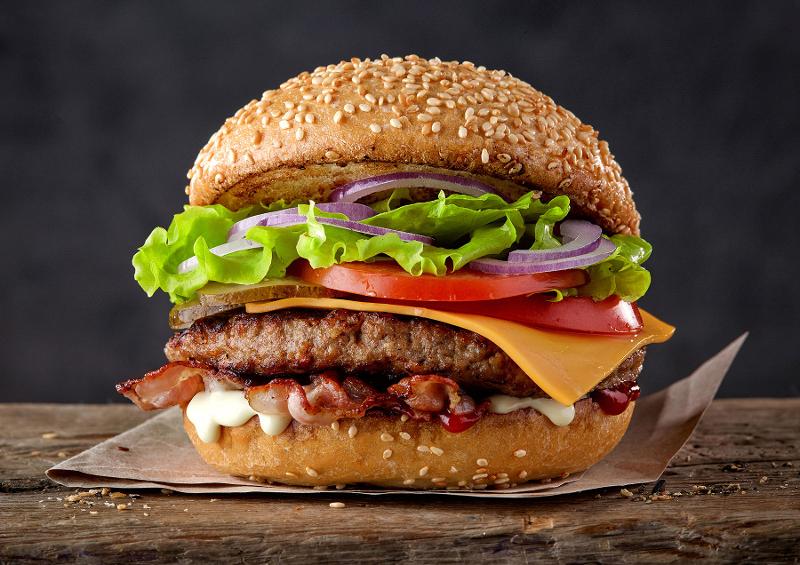
I really wanted a burger.
My return flight to Chicago was due to depart PHX at 6:00, and I knew I needed to eat some dinner before getting on the plane for a 4-hour flight. As a rule, I will take cold or room temperature food to eat on a plane. However, I insist on sparing my fellow flyers the aroma of my hot meal in such confined quarters.
All airports tend to have a variety of useful foodservice options, and the terminal at PHX had a reasonable selection based on the number of nearby gates. There was a full-service brewpub, but I had less than half an hour before boarding and did not want to stress while waiting for table service. Adjacent to that were some stalls that looked more promising. There were three fast-casual concepts clustered together, representing a solid cross-section of craveable options for a tired traveler. The pizza and Asian options looked tempting enough, and both had decent ordering lines, proving their desirability across the diverse population that inhabits of an airport terminal at any given time.
Then I saw exactly what I wanted.
At the end was a fast-casual burger concept with attractive blue signage and a digital board displaying a montage of sizzling burger patties and a scooper running across a mesmerizing virgin surface of ice cream. I did not recognize the name of the operation, but no matter. They clearly offered what I craved, and I was delighted to find it so close to my gate.
Yet as I approached, something seemed off. There was no line of hungry guests. There were very few folks seated in the area immediately in front of the stall. There was no one behind the counter.
Next to the wall with the digital boards was an enormous ordering tablet mounted on the service counter. I walked to the end of the counter to scan behind the wall, seeking an available friendly associate—perhaps stocking cups or preparing an order for a guest. There was no one there. I stood at the counter looking around for a few moments. About four or five feet behind the service counter sat the stainless-steel shelves so often found in commercial kitchens, and for a moment I thought I saw someone move behind the shelves. Turns out they were not moving toward me to offer to help.
So I walked away.
Yes, I could have simply used the tablet and fumbled my way through an order to get the burger I craved. I could have crafted the frictionless experience that is sometimes positioned as the pinnacle of the modern foodservice experience. Tablet ordering is often quite intuitive, and the ordering process is structured to lead guests through smoothly—all the while providing valuable opportunities to customize dishes, or perhaps tempting diners with check-boosting add-ons. But I had questions, and I was tired. I had never ordered from this particular concept before—heck, I didn’t even know it existed before that moment. I was looking for a kind soul to help, and none was offered.
Here at Technomic, guest experience and consumer research leads us down many interesting paths. One fringe benefit: it does not take long for me to look up a few different stats to determine if my encounters in the restaurant world are unique, or if my experiences and takeaways reflect those of a larger slice of the general population. I was relieved in this case to learn that a significant proportion of consumers are still very interested in traditional ordering methods, even at limited-service restaurants. As a matter of fact, brands that lead with service tend to win with consumers. This is a large part of the not-so-secret secret sauce behind the success of brands such as Chick-fil-A, Raising Cane’s or In-N-Out Burger. Friendly, personalized service feeds loyalty, which in turn feeds repeat visitation. Trust me, I have the numbers to prove it.
As consumers dial up pressure on restaurant operators to deliver a personalized (I am now using the word “individualized”) experience, providing limited service model options may go beyond the difference between an order today and the next visit. Hungry consumers may simply opt out before you get a chance to feed them anything at all.
Oh yeah, I ended up buying a cold grab-and-go sandwich. Too bad, because I really wanted a burger.
Robert Byrne is director of consumer and industry insights for Technomic.
Learn more about America's Favorite Chains.
Members help make our journalism possible. Become a Restaurant Business member today and unlock exclusive benefits, including unlimited access to all of our content. Sign up here.